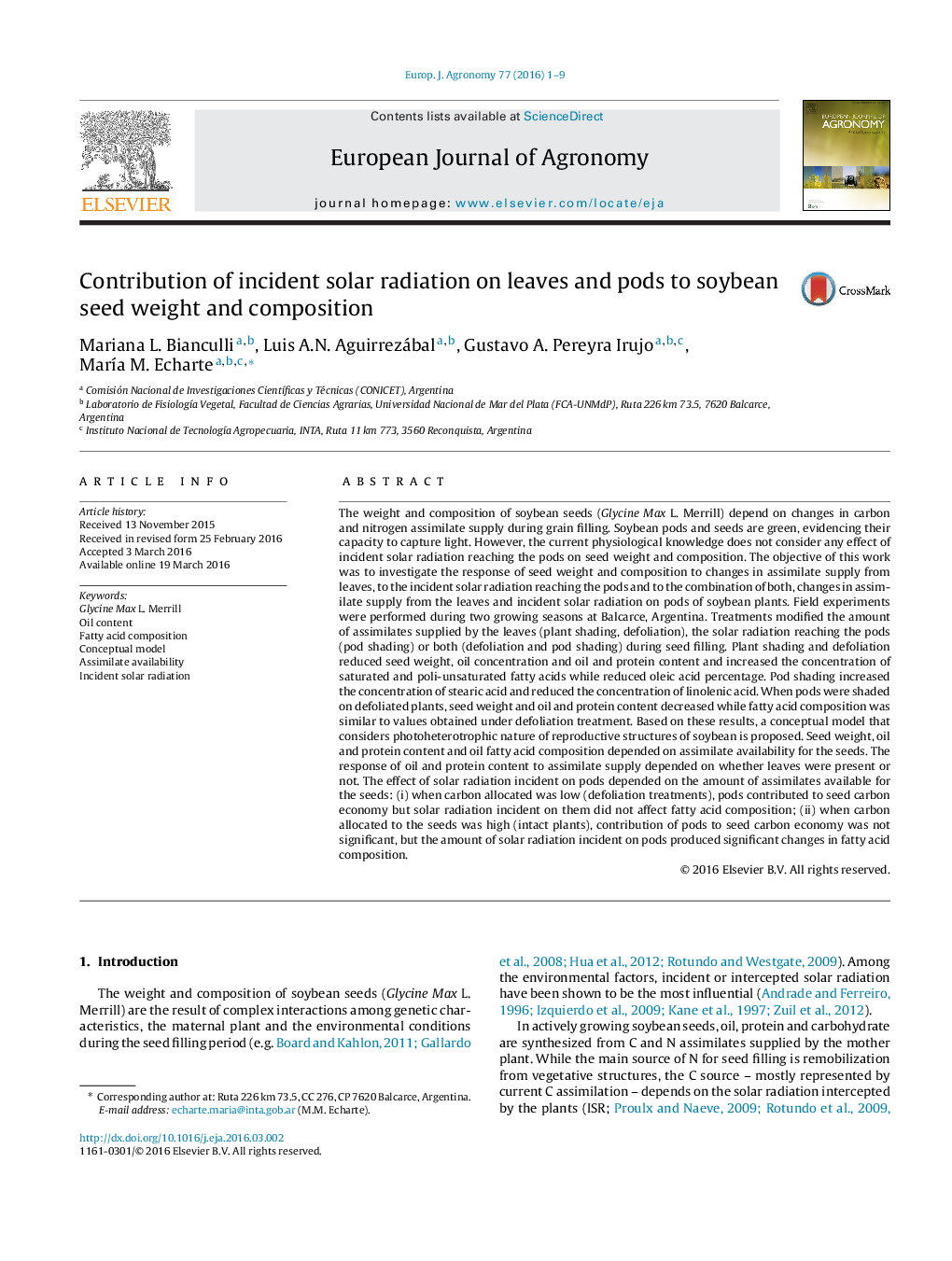| کد مقاله | کد نشریه | سال انتشار | مقاله انگلیسی | نسخه تمام متن |
|---|---|---|---|---|
| 4508726 | 1624448 | 2016 | 9 صفحه PDF | دانلود رایگان |
• Incident solar radiation reaching the pods affects seed weight and composition.
• This effect depends on the amount of assimilates available for the seeds.
• Pods significantly contribute to seed weight when leaves are not present.
• Fatty acid composition depends on assimilate availability and local effect on pods.
• Oil and protein respond differentially to assimilates depending on leaves presence.
The weight and composition of soybean seeds (Glycine Max L. Merrill) depend on changes in carbon and nitrogen assimilate supply during grain filling. Soybean pods and seeds are green, evidencing their capacity to capture light. However, the current physiological knowledge does not consider any effect of incident solar radiation reaching the pods on seed weight and composition. The objective of this work was to investigate the response of seed weight and composition to changes in assimilate supply from leaves, to the incident solar radiation reaching the pods and to the combination of both, changes in assimilate supply from the leaves and incident solar radiation on pods of soybean plants. Field experiments were performed during two growing seasons at Balcarce, Argentina. Treatments modified the amount of assimilates supplied by the leaves (plant shading, defoliation), the solar radiation reaching the pods (pod shading) or both (defoliation and pod shading) during seed filling. Plant shading and defoliation reduced seed weight, oil concentration and oil and protein content and increased the concentration of saturated and poli-unsaturated fatty acids while reduced oleic acid percentage. Pod shading increased the concentration of stearic acid and reduced the concentration of linolenic acid. When pods were shaded on defoliated plants, seed weight and oil and protein content decreased while fatty acid composition was similar to values obtained under defoliation treatment. Based on these results, a conceptual model that considers photoheterotrophic nature of reproductive structures of soybean is proposed. Seed weight, oil and protein content and oil fatty acid composition depended on assimilate availability for the seeds. The response of oil and protein content to assimilate supply depended on whether leaves were present or not. The effect of solar radiation incident on pods depended on the amount of assimilates available for the seeds: (i) when carbon allocated was low (defoliation treatments), pods contributed to seed carbon economy but solar radiation incident on them did not affect fatty acid composition; (ii) when carbon allocated to the seeds was high (intact plants), contribution of pods to seed carbon economy was not significant, but the amount of solar radiation incident on pods produced significant changes in fatty acid composition.
Journal: European Journal of Agronomy - Volume 77, July 2016, Pages 1–9
